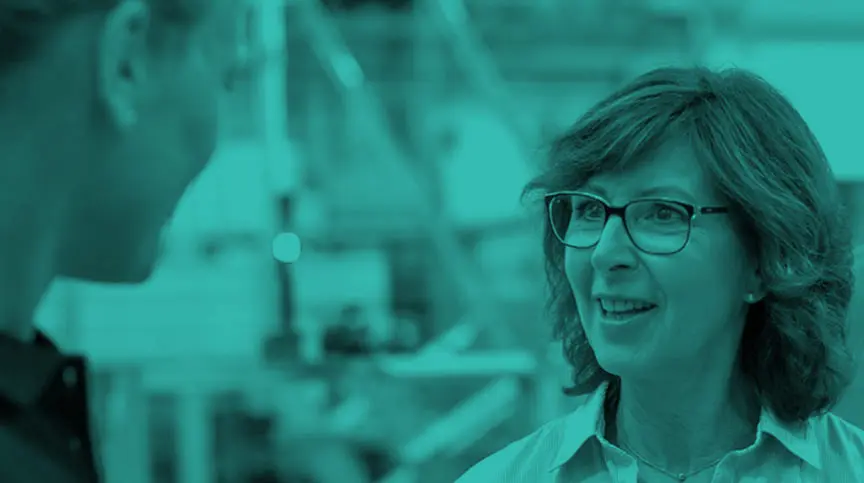There is no single, guaranteed, clearly defined path to becoming the chief executive of a large organization, and an impressive track record alone is not enough.
But if your ambition is becoming a CEO, there are a handful of key areas you should focus on to prepare for the role.
These 4 areas of readiness can’t guarantee a board will appoint you CEO. But they can increase your chances of learning how to become a CEO and landing in the corner office.
“The CEO job is not just another senior leadership role. It is fundamentally different,” says Bill Pasmore, a CCL vice president and organizational practice leader, who has been working with top executives and board members from numerous Fortune 500 companies to improve the way companies prepare potential CEO successors.
He notes that it’s important to understand the 4 key areas of growth towards becoming a CEO:
- Experience,
- Personal preparedness,
- Network depth, and
- Relationship quality.
These 4 areas of readiness provide a holistic and actionable way to decide if someone is ready to be CEO. And if they’re not ready, it can help them understand what personal and professional development they need.
Becoming a CEO: 4 Keys for Readiness
How to Reach the C-Suite
Let’s dig into each of these 4 areas of readiness, as outlined in our white paper, starting with the one that shows up on your résumé — experience.
1. Experience Readiness
Though specific requirements will vary depending on the organization and the board making the CEO hiring decision, there are 3 things corporations often look for in a new CEO:
- P&L responsibility. Simply put, has the candidate had responsibility for profit and loss of a major business unit?
- A global role. With international issues playing a bigger part in nearly every organization’s strategy, many boards want executives who have experience outside their home markets.
- Functional flexibility. Finally, experience in more than one function is highly valued. Finance and operations are among the most valued areas of functional experience.
Some boards also will consider industry and company tenure, while other boards may seek a candidate from outside the company or industry to provide a new perspective, and know how to become a CEO for a new organization.
2. Personal Readiness
Personal readiness encompasses a range of skills and traits, many of which don’t show up on a résumé. These are the characteristics that help determine whether someone is a “good fit” for a position, including:
- Beliefs and values. What someone thinks it means to be a good leader will vary based on personal experiences and core personality traits. But are their beliefs and values a match for the position?
- Personal skills. A CEO candidate’s intelligence, public speaking skills, comfort with being in the spotlight, and ability to think strategically are important.
- Personality characteristics. Integrity, high self-regulation, openness to new ideas, and other attributes are often considered by boards.
What personal factors will be most important vary over time and with different board members. The board is likely to consider the organization’s needs (Is a turnaround effort on the horizon?), the culture (Will the candidate be able to function effectively?) and even how they feel about personal interactions with a potential CEO (Is this someone I’m comfortable sitting beside during a long flight?).
3. Network Readiness
CEOs are expected to use their influence outside the organization they lead by interacting with key individuals. That may include the media, government officials, bankers, and other leaders in the industry.
Effective chief executives bring a network with them that can help them assess critical market conditions, influence regulatory actions, and connect the company with helpful resources.
The size and quality (but especially quality) of someone’s personal network also indicates how capable they are of pulling together the right people to solve problems.
Aspiring leaders learning how to become CEOs need to develop strong networks with their current boss, direct reports, and peers inside the company. They should also seek to network with others inside and outside the industry, as well as with board members. Candidates should keep in mind that professional networking relationships are formed when people can provide value to each other.
4. Relationship Readiness
Working with others is at the heart of being a CEO, so boards often consider a candidate’s relationship readiness. When learning how to become a CEO, leaders should work on maintaining effective relationships — in good times and bad — with those they interact with regularly both inside and outside the organization.
Boards want CEOs who won’t drive away talented executives, who can build consensus, and who will inspire confidence. To assess this, they may ask relationship-focused questions about prospective candidates including:
- Does this candidate follow through on commitments?
- Can this prospective CEO mentor others and give tough feedback in a straightforward, respectful way?
- Are they open to being told they’re wrong? Do they listen to what others have to say?
- Are they sensitive to interpersonal dynamics related to diversity?
- Can the candidate work through conflicts productively?
Boards will often also consider how a prospective CEO has handled personal relationships. Has the candidate, for example, been able to sustain appropriate work and family balance? Insights from a candidate’s personal relationships can tell a board a lot about how someone might handle work relationships.
These considerations are among the most important competencies for function leaders, and are even more important if you want to become a CEO.
The View From the Top: Perspectives a CEO Needs
“Many CEOs put it this way: Until you actually become the person in the corner office, you can’t imagine what the job is really like,” Pasmore explains.
This is the crux of the challenge to prepare CEO candidates — and maybe a clue as to why almost half of all CEOs fail and companies struggle with short-tenured chief executives.
And once you earn a place in the C-suite, everything you do — or don’t do — is noticed, analyzed, and judged.
As the top leader, you’ll see that your personal effectiveness and the organization’s effectiveness are deeply entwined.
“For CEOs and other top-level executives, leadership effectiveness is measured by organizational success,” says Rich Tallman, a senior faculty member at CCL and a trainer in our Leadership at the Peak program. “They need to honestly assess their leadership style and ask themselves, ‘What about me helps us meet our organizational challenges — and what about me is getting in the way?’”
Whether you climb a traditional corporate ladder, shift around a highly matrixed organization, or leap directly into a senior role, few experiences fully prepare you for a life of leading at the top of an organization.
In fact, less than 25% of companies are satisfied with their leadership teams, according to a report from The Josh Bersin Company. That’s a very low number, considering the magnitude of responsibility at that level.
What makes leading at the top so challenging?
“Once you get to the C-suite, the view is different,” Tallman says. “As simple as that sounds, that single fact makes the work of a leader categorically different.”
“CEOs will often say, ‘When I was a senior vice president, I had major responsibilities but still had a more narrow view than I have now,’” Tallman continues. “Once leaders have organizational-level roles, they have to pay attention to the whole organization and how the many pieces interact. Up until that point in a career, most leaders are responsible for a function or a segment of the business. They learned to lead successfully in a more narrow context as they competed, in a very real way, with other functions, people, and priorities within the company.”
In contrast, if a CEO maintains a narrow perspective and fails to grasp the broad view, the organization is sub-optimized at best.
“Nobody else has the view of the CEO — and this is key,” says Tallman. “With that top-of-the-mountain view comes 2 crucial responsibilities: To learn how your leadership style affects and informs that view, and to transfer your unique, bigger perspective through the rest of the organization.”
Together with the senior leadership team, the CEO creates and implements the business strategy, drives growth, inspires a high-performance workforce, and sustains the company’s competitive advantage.
As business technologies and markets shift, leaders — and organizations — must be able to adapt.
These big-picture challenges require leaders who can:
- Create and articulate a vision
- Create strategic alignment
- Develop a leadership and talent strategy aligned with business strategy
- Lead the culture
- Establish a strong executive image
- Create a culture of innovation
- Catalyze change
- Lead outwardly
- Influence others
- Develop and deepen self-awareness
- Be agile learners
- Communicate all of the above effectively
“While these competencies may be obvious to or understood by many leaders, we know that leading at the top requires people to excel at these competencies in new ways,” Tallman says. “For example, how to effectively communicate a major strategic change as a CEO today isn’t the same as skillfully delivering information as an operations manager. The role of CEO changes both what you do and how you do it.”
Further complicating the job of CEOs is the lack of information about their effectiveness as leaders.
“For many executives, it’s been years since they’ve been given honest feedback about their leadership style or strengths and weaknesses,” Tallman explains. “They don’t have the input they need for accurate self-assessment, nor the time for reflection and learning.”
This needs to change. Without the dual understanding of the view from the top and an accurate picture of the impact they have on the organization, many of today’s top leaders will fail — and many in the pipeline are destined to follow the same path. That’s why making clear connections between individual leader development and current organizational challenges is the crux of our leadership programs for C-level executives and top leadership team members.
How to Become a CEO: 3 Additional Tips
Build Experiences to Help You Prepare
The CEO job isn’t just another senior leadership role. It’s fundamentally different.
So as you can see, an impressive track record isn’t enough to prepare you to become CEO.
Potential C-suite candidates should seek out CEO-caliber experiences before they need it. We offer 3 tips that will make you a better senior leader, strengthen you as a CEO candidate, and serve you well if you get the nod:
1. Stop doing more of the same.
Staying in your current role longer isn’t the key to readiness. Nor is round after round of career moves that build on what you already do well. Honestly assess your weak spots, identify skills you need, and seek out challenges or roles that fill those gaps. If you need strategic planning experience, step up to lead the company’s scenario planning efforts. If you need more international experience, lobby to lead the company’s entry into a new geographic market. Note that you need to learn and lead as you go — the ability to succeed in unfamiliar territory is an essential CEO skill.
2. Learn to take a direct hit.
Until you’re CEO, you have someone else to absorb some of the shock of a poor strategic decision or an operational problem. For CEOs, the shock absorber is gone. No one else can share the blame for poor performance. To get a sense of this, make sure you’re taking personal responsibility for key, high-profile initiatives. Can you own the work without micromanaging it? Can you take the hits rather than looking for cover?
3. Learn how to work with a board of directors.
Few CEO candidates understand board dynamics, so start learning now by taking leadership roles on boards of local nonprofits. Ask your boss or mentor to help you gain a corporate board post where you can use your expertise, but also gain new experience and perspectives.
And if you’re on the short list of potential CEOs for your company, find ways to get to know individual board members: work with them on committee projects, play host when they visit your site, join them on trips to other company locations, ask for a walk-through of their own business. Understanding different board members’ experiences, perspectives, and personalities will give you insight into the demands facing the CEO.
Ready to Take the Next Step?
Prepare yourself for C-suite challenges and get ready to become CEO with our executive leadership programs.











